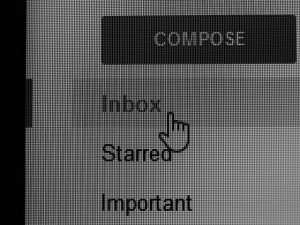dental email marketing
3 Insights That Protect You from Being One-of-Those Dental Emailers

You know “that person you don’t want to receive email from…?” It’s the eye-roll inducing marketing cousin of Cecily Strong’s SNL (Saturday Night Live) sketch, “the girl you wish you hadn’t started a conversation with…” character.
A friend and colleague of mine received one of THOSE emails. And the take-aways are beneficial if you want to avoid being “the dental emailer whose list you wish you hadn’t added your name to.”
I could make this short and sweet by saying the fix is easy. “Unsubscribe!”
You and your readers have more power than you realize. So, you should think long and hard about the content you send (more on that in a moment).
Something amazed me when I worked at a dental practice. Patients would often whine about the email we sent about this or that.
They would often invest more time voicing their dissatisfaction for whatever reason than reading, deleting, or perish the thought, unsubscribing.
As Zig Ziglar would say, “Some people are born in the objective case in the kick-a-tive mood.” Translation: they’ll whine about anything.
Yet do they have a valid point when it comes to the email you send that invades their space (permission granted, of course)? And are you giving them a reason not to boot you to the curb via a quick click of the unsubscribe link?
Consider my friend and colleague’s experience your wake up call!
Here’s the subject line of the email she received:
“Hey, [FIRSTNAME], what’s wrong with your blog?”
I’m not kidding, that’s it.
First, the subject line is an attempt at being “cute.”
It typically doesn’t work because we’re accustomed to it…like we are hype.
When hype leads the way. I’m out and so are most readers.
I avoid people who come off this way. And I certainly don’t waste my time reading emails or any marketing resources that start a conversation with such a tone.
Which brings me to my second point.
It’s an attempt at being conversational, but it misses a vital element of that process.
I could say that to my friend/colleague in a subject line to her without question. Why?
We have a relationship. And that’s my point.
Evaluate the relational quality of your list.
- Are you chummy? (Can you talk about anything relevant with them?)
- Do they enjoy hearing from you?
- Did they ask to hear from you?
- Does the information or conversation you share with them help them with something they need?
And this is HUGE…
- Can you continue the conversation via email at any time, about any subject, and they look forward to hearing what you have to say?
Before you even get a second chance, you must understand this.
The content of your email communications are irrelevant if you haven’t earned the right to be heard.
I subscribe to a number of email lists. Confession time: I don’t read all of them.
In fact, since we’re cleaning the slate here – I occasionally delete some of them without even opening them.
The point?
Timing matters.
Not all email subjects – even from trusted, valued sources – hit my hot-button on a given day. You won’t always bat a thousand when you send an email to your list.
But you increase your batting average when they find your content helpful and useful more than they find it hype-ful (how’s that for a word?).
Assure that your email communications to your dental patient, client, or house-list are helpful not hype-ful!
- Share an oral health trend instead of the latest triple-your-savings offer of the month.
- Lead with a benefit – something that improves their life, health, etc.
- Be generous with information that serves them with no-strings-attached (e.g. “Like” our Facebook page to enter our contest, Refer a friend or family member for 10% off your next treatment, etc). Email your list just-because without an “angle.”
Trust still translates via email.
Scammers, spammers, and hyped up marketers have peed-in-the-pool long enough. It’s time to take back the valuable online territory they’ve fouled up.
It should go without saying that you’re trustworthy. And your email content is simply another way your character shines.
Patients, clients, and those you do business with will actually anticipate seeing you in their inbox if you’re a source of useful, beneficial content.
And these days it’s really about the information.
Profit follows trust.
How to Create Irresistible Dental Marketing that People Respond to Again and Again
The hummingbirds are back. How do I know this?
It’s the same reason people will choose your dental services without you feeling the need to hype up your marketing strategies.
Hummingbird market research (not sure if this is legit…but stick with me) says they return to my region in mid-April. And the experts are usually spot on.
But there’s another reason.
I hung my trusty feeder and filled it with an irresistible resource.
Hummingbirds find me because they seek out the bright, flower-like feeder that contains the sweet, delicious, sugar-water (nectar) I provide just outside my kitchen window. These fascinating creatures flit back and forth for the satisfying energy source countless times from April to October each year.
I just gave you 3 big ideas with my hummingbird observations. Did you catch ‘em?
1-Stop feeling the need to “hype-up” your marketing strategies.
Why do you do this?
Frankly, why does anyone do this?
My perspective? It has to do with the age-old, in-your-face marketing approaches we’re accustomed to.
Most of us were raised on TV and radio advertising that uses over-the-top techniques to get your attention (and they still do). And this was in the hopes that you’d remember them when it came time for a buying decision.
Each morning, my wife and I have the local news on our bedroom TV while we’re dressing and preparing for our day. And every morning, much to her frustration, I make critical, tongue in cheek comments about the advertising spots that run.
Many, if not most are local auto dealerships. Their repetitious, ear-worm inducing, hyper voice over specialists make me want to reach through the screen and shout, “Enough already!”
You get my point, right?!
Be careful that the ear-worm effect doesn’t infect your next dental promotion. Screaming at people to schedule, call, “Like” (Facebook ads, contests, etc), etc risks the same as those obnoxious ad pitches – changing the channel.
The downside (for you) – changing the channel translates to changing dental providers.
And if you’re marketing to dental providers (as many readers here do), be careful you don’t risk the same. I’ve watched your mailers being routinely tossed in the trash by the designated mail “screener” when I worked in a dental practice.
No one’s opening your mailer…because you’re not speaking their language. Or you’re using techniques that are a straight-up turn-off.
It’s the equivalent principle of me placing something less appealing in my hummingbird feeder. A couple of drags off that and those lil’ birds are off to sweeter fields.
It’s more attractive (effective) to create a conversation around your service, products, offers than it is to randomly shove it in their face. Because that’s-how-it’s-always-been-done isn’t a strategy, it’s a path to marketing extinction.
- Build a relationship by providing no-strings-attached (free) content via a consistent blog presence on your website.
- Send email that informs or delivers value (see our latest blog post, etc) instead of promoting something or asking readers to schedule.
- Watch your language – or rather your tone – in each communication or content piece your deliver (ditch the salesy, pitchy tone).
2-Listening IS your market research.
Your patients or clients are asking tons of questions. And many of their questions aren’t obvious…unless you’re listening between the lines and in the margins.
Keep your ear to the ground. What are your patients or clients telling you?
Deep dive into your online reviews or post-treatment/post-sales surveys. Locate the truths below the surface (even the ones tough to hear).
Like Jack Nicholson’s character said to Tom Cruise’s in A Few Good Men – “You can’t handle the truth!”
But you also can’t handle not learning from it and improving your service and marketing strategies.
And speaking of market research.
- Survey your patients/clients with a purpose. Avoid routine, meaningless, corporate-ized, canned survey documents.
- Brainstorm some strategic questions that help you understand what your patients or clients are thinking. Then…respond with like-minded content and marketing strategies.
3-Be the expert they’re listening to.
No one really likes to brag about themselves. Unless you’re a card carrying narcissistic, pompous individual (unfortunate for us all, some are).
The better approach – become brag-able. Translation: become a recognizable expert or authority.
You (yes, YOU) provide a unique, branded approach to whatever your specialty is. Perhaps you’re thinking, “But, there are 100’s of dentists in my city or region…!”
So what?
Here’s my question – are they recognized as a go-to provider, not just in treatment…but also with valuable information about that treatment?
Or…the science behind the treatment?
Or…the latest research (explained in street-level terms)?
Or…with clear, non-technical answers to the questions people are asking about the treatment (remember the earlier point on “listening”)?
These days, people want finger-tip access to information about what’s important to them in the moment. Will you be there…with answers?
- If your website doesn’t have a blog or article page – start one…NOW!
- Make your blog a virtual library of relevant, useful information specific to your expertise, services, etc.
- Build a tribe of loyal readers and sharers by promoting your content to your patient or client list via email updates.
And if you’ve delayed starting a blog because you’re concerned about time or have a fear of writing…
- Hire a content curator and/or a copywriter to research and ghost-write your content on a consistent schedule.
It’s your time to stand out as an expert by taking a few intentional steps. Create the content, share the content, and the results will show.
Let’s review…
Stop the hype. Listen as research. Highlight your expertise.
People, like hummingbirds, migrate to where they find what they need.
3 Dental Email Marketing Strategies to End Inbox Overwhelm

Creative Commons
“Email is where keystrokes go to die.”
Wait! Don’t send email to the bottom of your dental marketing strategies.
But before you send another email it would help to understand the value of your efforts.
James Clear wrote about Microsoft employee and productivity expert, Scott Hanselman’s jolting perspective.
“Email is where keystrokes go to die. You have a finite number of keystrokes left in your hands before you die.”
It makes sense that you should value your energy. Yet what if you evaluated each word you type?
- Would it change what you wrote in your most recent email message to your list?
- Could you use those same keystrokes to create a message or blog post that will help your readers rather than potentially repel them with another in-office special?
A simple fly-over of your own email inbox will quickly remind you of how overwhelming content can become. It’s no surprise that you wonder –
“How do I get the most return from the emails I send to my practice, house, or business list?”
That’s a good question. And there’s a one word tweak I’d offer to shift your perspective slightly.
This slight shift in perspective could be the difference in the effectiveness of your email marketing strategies. It’s all about valuing your ability to influence people for the good you want to deliver.
After all, you’re a professional. Whether you provide dental services that transform someone’s health and appearance or you provide products and services that enable dental professionals to accomplish those goals – you have something to offer.
So…here’s the shift in focus I earlier mentioned…ready?
Every marketing strategy you use (email included)
is about the “give”rather than the “get.”
It’s a valid question to ask – “How do I get the most return…”
I’m in business just like you are. I have a finite amount of time (and keystrokes) to share my expertise with the world. So getting the job done is alright by me.
These days – and here’s the deal – it’s to your advantage to give something to get something. Patients, buyers, shoppers, clients (whoever we’re talking about) are over the whole in-your-face, hyped-up sales approaches.
Make Your Keystrokes Matter by Ending Email Marketing Overwhelm
1-Email is only as effective as your intention.
Amazing thing about your senses. Especially your sense of smell.
Isn’t it interesting how you can sniff someone’s intentions. This happens with marketing all the time.
A subject line can reveal a lot about the sender’s desired result. There’s been much debate about whether you should veil your intentions or cut to the chase.
The answer depends on your relationship with your recipient(s).
For example, if you’re accustomed to a bottom-line sales message, it won’t surprise you when a subject line introduces a can’t-miss offer. If you’ve purchased from them before and you’ve benefited from their product or service it’s no issue to you.
But if you’re not on that level yet…well…you feel the turn-off. Am I right?
Think about the email communications you’re sending.
Are they worded as if the reader is a satisfied user, patient, client, customer that you’ve established a trusted relationship with?
Or…
Are they filled with numbing, pitchy content that makes the reader feel like a list number minus any real connection with you?
Check your intentions at-the-cursor. Value the relationship you have with the reader first, and in many instances, long before you value their dollars.
2-Email is engaging when it connects emotionally first and economically last.
People put their money where their heart is. That’s not a trite take-off on a common idea.
This is one of the fundamental rules of selling –
“People buy things for emotional not rational reasons.”
These days it’s more about engaging than selling. I know…I know you’re tired of hearing about engagement.
Engagement this. Engagement that. I get it.
But don’t dismiss this trendy word before you realize its intrinsic worth to your email marketing.
If you want to connect with people, get their attention. And once you have it, respect it.
Don’t dumb-down or numb-down your connection with overkill on promotional hype.
Give your readers something that sticks with them from the first keystrokes you make.
- Tell a story in the first paragraph (the lead).
- Connect the story to their problem (the body copy).
- Reveal the solution via your service/product story to their problem (the close).
And don’t forget the all-important element…
- Compel them to open and read (engage with) your email content by crafting a short, catchy (not too cute or hypey), benefit-focused subject line.
3-Email energizes your reader when it does two things:
When it’s useful – avoid short-changing or duping your reader list. Give them something they can use every time you email them.
If you’re promoting a service or product connect that to a problem they have. Make your service/product the useful benefit to solve a common problem even if they don’t schedule an appointment or purchase the product/service.
Share links to other relevant content via colleagues’ or industry leader’s blog, YouTube channel, Podcasts, etc.
Give bonus paybacks just for reading your email – add them to an exclusive group for your next promotion (before the general public), allow them priority access to a specific treatment, service, or product feature.
When it enhances communication – remember, connect before you ask for something.
Take time (via an email or two…or three) before you invite them to do something. This reveals that you value them more than what they do for you.
Ask relevant questions to understand how you can help them via your services, products, etc.
Create new email content around answers to those questions (talk about maximizing the value of your “keystrokes”).
Ask before you tell or offer. Communication works better that way.
Make your words matter – every single keystroke.
3 Compelling Ways to Use Story in Your Dental Marketing Content

Stories have power. It’s why you enjoy a night at the movies or a compelling summer beach read.
And speaking of compelling – that’s the super-power element of effective stories. They compel you.
Your dental marketing content will succeed these days over the marketplace noise for one reason. And you should evaluate your copy and content by this emerging standard.
Story sells.
A recent post on Copyblogger compelled me to explore more deeply this whole idea of story telling content. I’ve been a fan of it for awhile.
The Copyblogger article carried me to another dimension in my future writing for clients. And it will do the same for you if you value having your dental marketing content stand out.
Sean D’Souza says your content storyline must have three core elements to compel a response.
1-The sequence – the events (points, ideas, etc) that build upon each other and create meaning.
2-The suspense – the drama of what’s happening, what’s up, or what’s approaching.
3-The roller coaster – the up and down and all around of good to bad to good, etc.
The reason story works.
A fair amount of marketing content is full of hubris. It talks about YOU, YOU, YOU.
Overused phrases like “state-of-the-art,” and “We’re proud to (announce this or that),” offer very little compelling value.
Where’s the story? And if there is one how does it benefit the reader?
Leaving out compelling benefits mutes your storyline. It’s like reading a clearance-rack biography or paying good money for a 1-star movie – boring and disappointing!
A story (your job: to find it – or hire someone who can – and tell it) has the advantage of a logical and compelling sequence of events. Add in some suspense and a roller-coaster of features and benefits to draw your reader in.
What does this have to do with dental marketing copy and content? Good question.
Enough “suspense.” Here’s the scoop.
3 Story-Intense Dental Marketing Content Tools to Compel Interest in Your Services
1-Case studies
These are story super-powers. A case study is basically a success story.
A dental case study would include a “villain” such as oral cancer, periodontal disease, bleeding gums, yellowed teeth, crooked teeth, etc. Your sequence of events would include the problem, product/treatment/service, and the solution story.
When a patient or prospective client finishes reading this brief success story they’re compelled to take action. Your offer is the action that will solve their problem and create a profitable outcome for you.
2-Blog posts
Appear regularly on your reader’s radar. Blog posts have viral capacity because they create a “what’s next?” response.
Read a compelling blog post and you’ll anticipate the next one. Blog content is evergreen and ever evolving.
Exceptional bloggers earn a spot on your newsfeed. You bookmark their content like you do a favorite passage in a novel or non-fiction book.
Your blog posts will move up the list of fave-reads when you add in story factors.
Keep your posts to between 350 and 500 words on average. Tease the next post by not giving away too much “plot.” Your readers will thank-you by returning again and again to follow your “story.”.
Blog posts build trust too. Become a trusted expert by delivering trusted content week in week out.
Eventually readers become patients, clients, or customers. They will buy/seek your services when you’ve proven yourself as a trusted source of expertise via your blog content.
3-Email
Email is a perfect (and overlooked) canvas for story based copy. Avoid jumping in with your promotion or facts that tip the reader that this is another sale-sy email.
Lead with a story. How?
Listen to culture, current trends, local events, your own experiences. Use these to craft a story that introduces your email.
Lead with a story in your email copy. The added drama will compel your reader to stay with you.
Two essentials – make a good transition from the story to the email purpose (promotion, information, etc.).
And…don’t miss this…
Write a subject line that prompts the email to be opened. Many emails fail at the inbox level because the subject line is anything but compelling.
An email subject line is like a movie trailer. It must move your reader to see the full feature.
Add some drama to your dental marketing copywriting and content. Use story to compel interest and your expertise will profit.
Which content “tool” do you most often use to promote your dental services?






